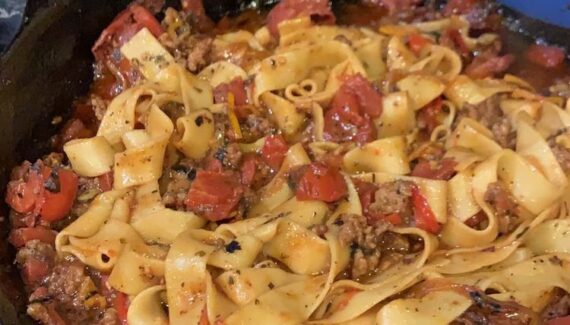
Cafeteria Noodles: A Nostalgic Comfort Dish Reimagined
A step-by-step guide to making this beloved, simple, and savory classic
Cafeteria noodles—just hearing the name might take you back to school days, lunch trays, and the unmistakable aroma wafting through long cafeteria lines. This humble dish was a staple in school lunch programs across the U.S. for decades, and for good reason: it’s budget-friendly, filling, flavorful, and ridiculously easy to make.
But don’t be fooled by the simplicity. When made right, cafeteria noodles are a creamy, savory, and heartwarming bowl of comfort that can still satisfy the modern palate. This article will walk you through the process of making cafeteria noodles from scratch, adding a few optional upgrades if you’re feeling adventurous.
What Are Cafeteria Noodles?
Cafeteria noodles are typically made from egg noodles simmered in a savory beef broth with butter and seasonings, often thickened slightly to create a silky, almost gravy-like texture. They’re soft, tender, and comforting — a perfect side dish or even a standalone meal when you just want something warm and hearty.
Ingredients You’ll Need
For the Classic Version:
- 12 oz wide egg noodles
- 4 cups beef broth (low sodium preferred)
- 2 tbsp unsalted butter
- 1 tsp garlic powder
- ½ tsp onion powder
- Salt and black pepper to taste
- 1 tbsp cornstarch (optional, for thickening)
- 2 tbsp water (to dissolve the cornstarch)
Optional Upgrades (for a modern twist):
- ½ cup cooked shredded beef or rotisserie chicken
- ½ cup heavy cream for extra richness
- Chopped parsley or green onions for garnish
- A dash of soy sauce or Worcestershire sauce for umami boost
Step-by-Step Method to Make Cafeteria Noodles
Step 1: Boil the Broth
In a large pot, bring the beef broth to a gentle boil over medium-high heat. The broth serves as both your cooking liquid and flavor base, so use a good quality stock or homemade broth if available.
✅ Tip: If using store-bought broth, choose low-sodium so you can better control the salt level.
Step 2: Add Seasonings
Once the broth is simmering, stir in:
- Garlic powder
- Onion powder
- A pinch of salt and black pepper
This step lays the savory foundation. You can also add a splash of Worcestershire sauce or soy sauce here for added depth.









No Responses Yet